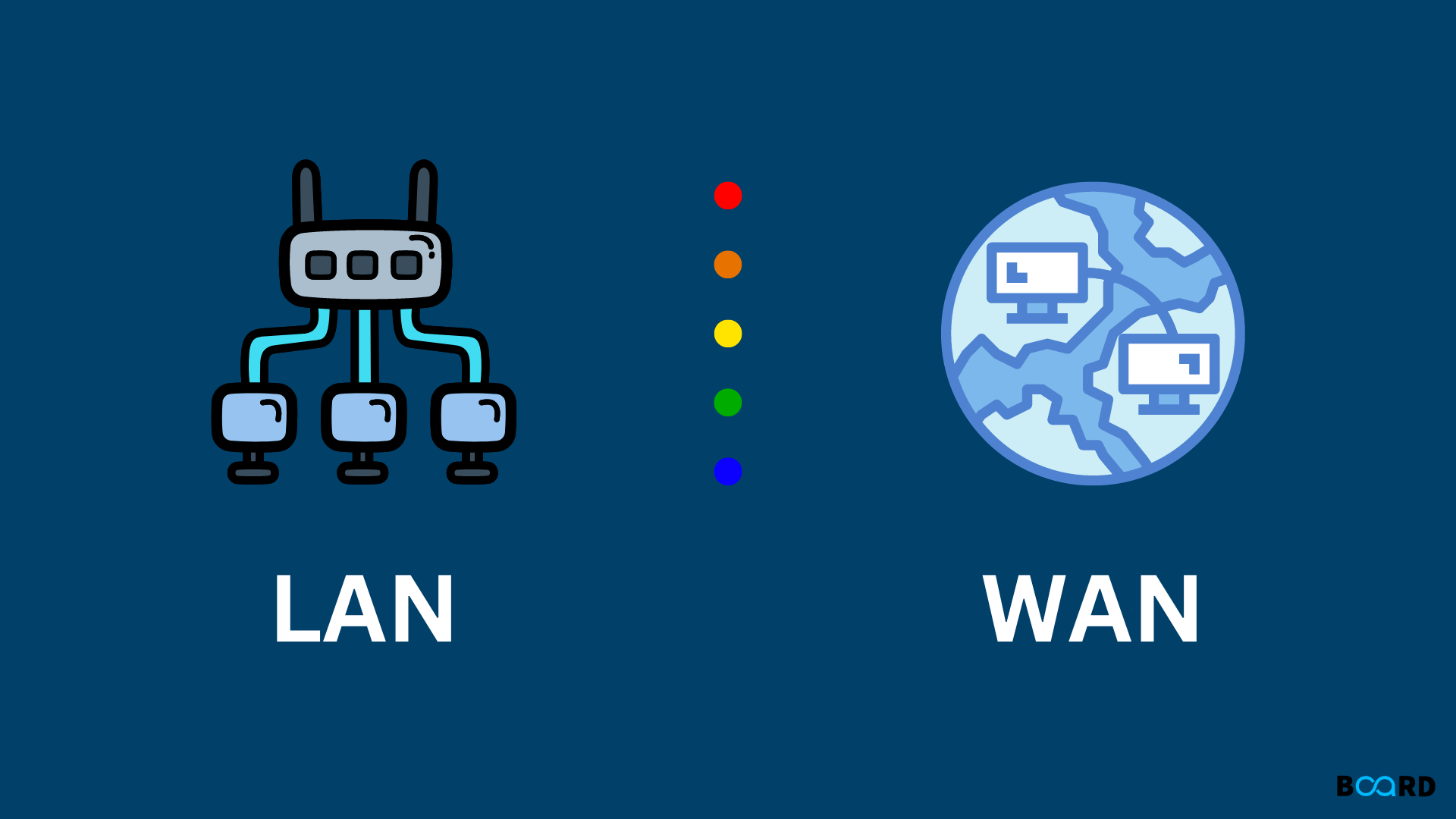The Difference Between a LAN and a WAN

A LAN (Local Area Network) and a WAN (Wide Area Network) are two types of computer networks that differ in their geographical scope, size, and the technologies used to connect devices. Here are the main differences between a LAN and a WAN:
-
Geographical Scope:
- LAN: A LAN covers a relatively small geographic area, typically confined to a single building, office, campus, or home. It may extend up to a few kilometers in size.
- WAN: A WAN spans a larger geographic area, connecting devices across multiple locations that may be separated by long distances, such as cities, countries, or even continents. WANs can cover vast geographic areas, including global networks.
-
Ownership and Control:
- LAN: A LAN is usually owned, controlled, and managed by a single organization, such as a business, educational institution, or residence. The organization has direct control over the network infrastructure and devices within the LAN.
- WAN: A WAN may be owned, controlled, and managed by multiple organizations, service providers, or entities. It often involves interconnections between different LANs and may traverse public or private network infrastructures.
-
Data Transfer Speed:
- LAN: LANs typically offer higher data transfer speeds compared to WANs. They often use high-speed Ethernet or Wi-Fi technologies to achieve fast local communication between devices.
- WAN: WANs may have lower data transfer speeds compared to LANs due to the longer distances and diverse network infrastructures involved. Data transfer rates in WANs can vary depending on factors such as bandwidth, latency, and network congestion.
-
Cost:
- LAN: LANs are generally less expensive to set up and maintain compared to WANs. The cost of deploying LAN infrastructure is limited to the size of the local area being covered, and LAN technologies are often more affordable and readily available.
- WAN: WANs can be more expensive to implement and operate due to the need for specialized equipment, long-distance connectivity, and ongoing maintenance costs. WAN services, such as leased lines, MPLS (Multiprotocol Label Switching), and dedicated circuits, may incur additional charges.
-
Reliability and Performance:
- LAN: LANs typically offer higher reliability and performance compared to WANs. Since LANs operate within a limited geographic area, they are less susceptible to external factors such as network congestion, latency, and environmental conditions.
- WAN: WANs may experience lower reliability and performance compared to LANs due to factors such as longer transmission distances, multiple network segments, and reliance on external network infrastructures. WAN performance can be affected by factors such as network latency, packet loss, and bandwidth limitations.
In summary, LANs are localized networks that connect devices within a limited geographic area, such as a building or campus, while WANs are wide-reaching networks that connect devices across larger geographic areas, such as cities or countries. LANs offer higher speeds, lower costs, and greater reliability within their local scope, while WANs provide broader connectivity but may have lower speeds, higher costs, and lower reliability due to the longer distances involved.
Thank you,
